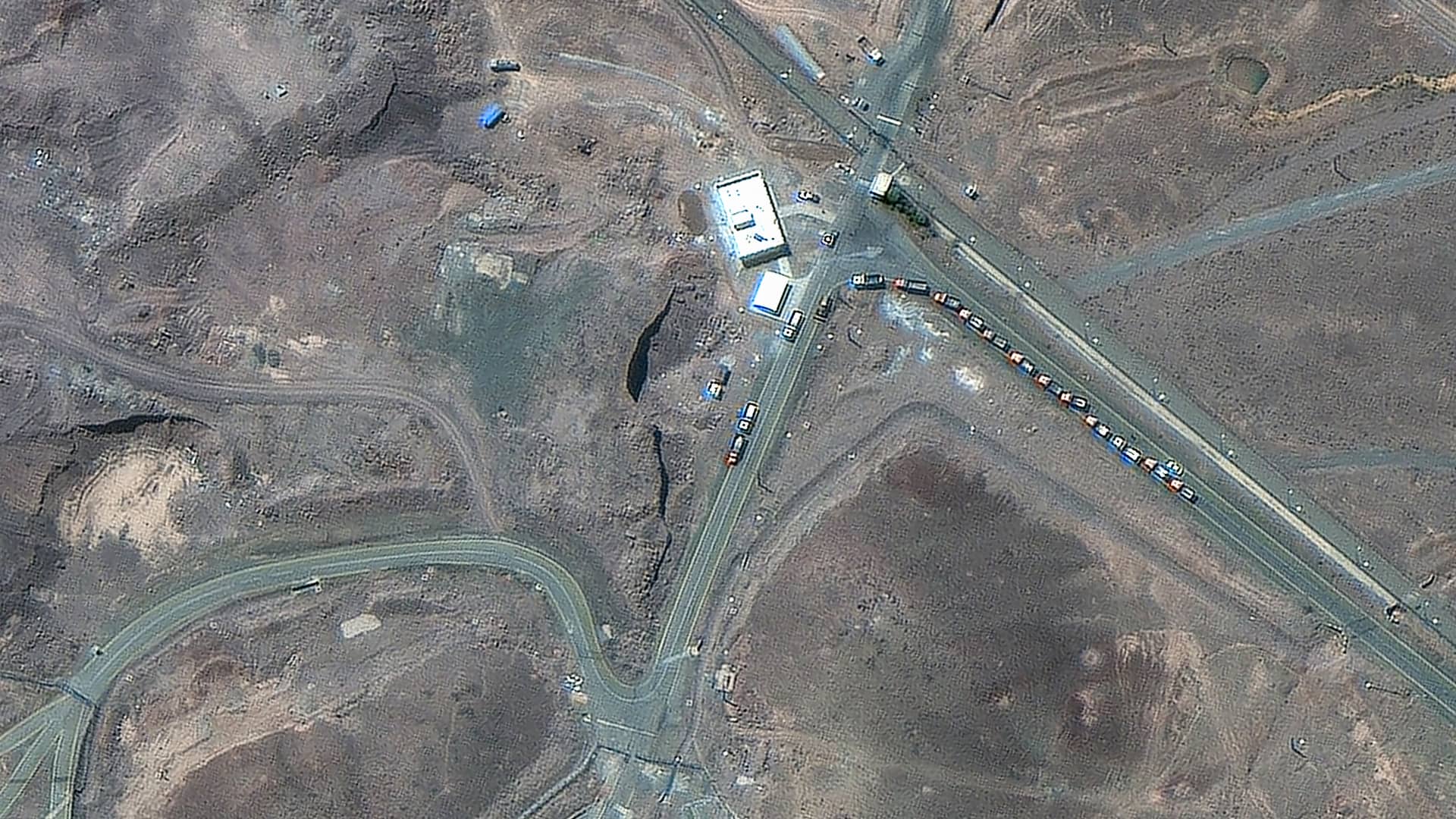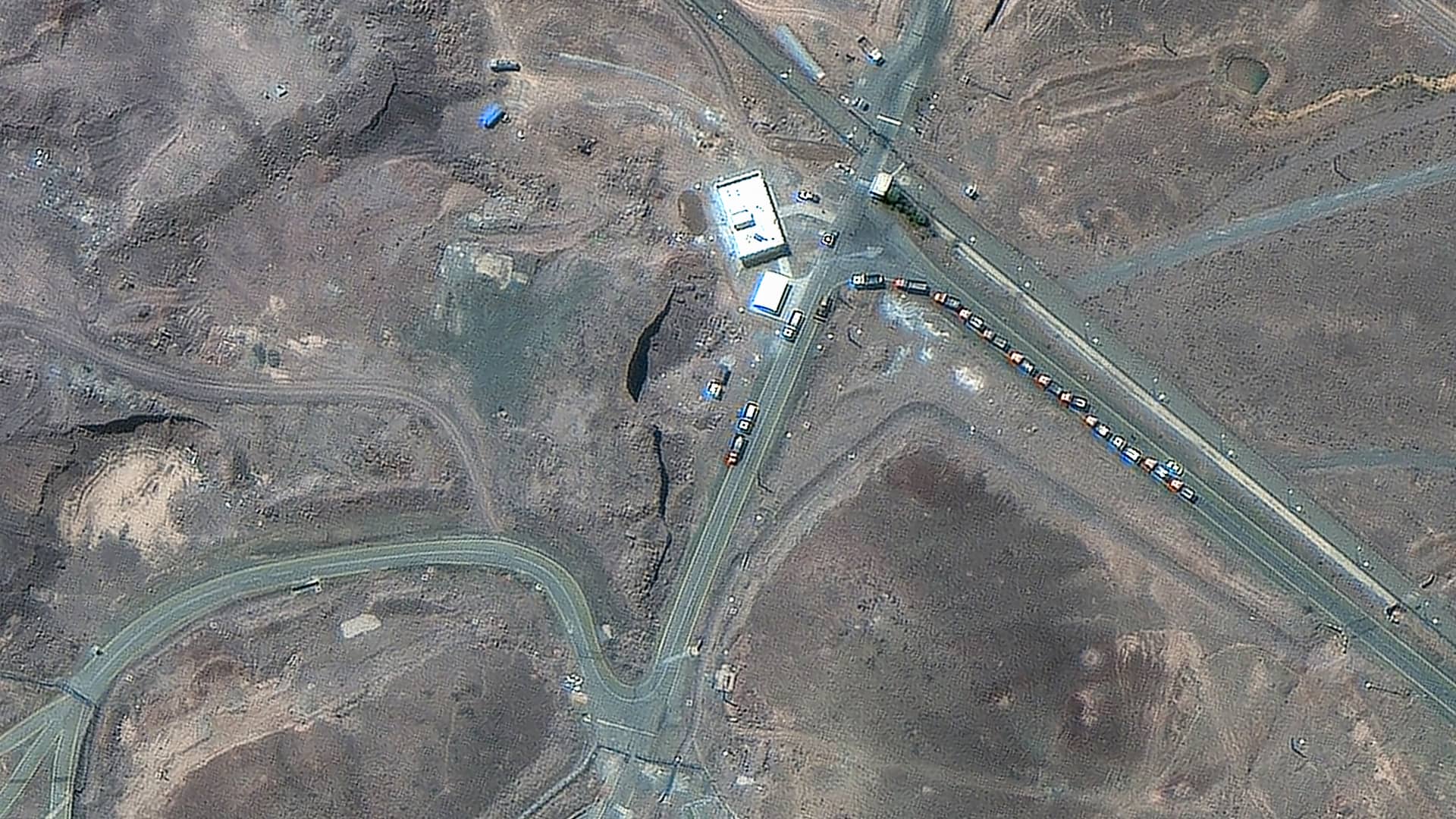Introduction
In the shadowy realm of international politics, recent strikes on Iran’s nuclear facilities have sent shockwaves through the global community. The U.S. and Israel, in a coordinated effort, have targeted key sites, notably the Fordo Fuel Enrichment Plant. This move marks a pivotal moment in the long-standing conflict between Israel and Iran, with the U.S. playing a more direct role. The following analysis delves into the significance of these strikes, the evidence of damage, Iran’s response, and the broader implications for regional stability.
Fordo: The Primary Target and Its Significance
The Fordo facility, nestled deep within a mountain, has become the epicenter of these strikes. Its subterranean location and robust construction make it Iran’s most fortified nuclear site. The facility’s primary function is uranium enrichment, a crucial step in nuclear weapon production. This makes Fordo a prime target for any nation aiming to thwart Iran’s nuclear ambitions.
Satellite imagery from Maxar Technologies revealed increased activity at Fordo prior to the strikes. Cargo trucks were seen near the underground entrance, suggesting efforts to reinforce the facility. This activity raises intriguing questions about Iran’s preparedness and potential intelligence leaks. The strikes on Fordo were executed with precision, utilizing powerful “bunker-buster” bombs to penetrate the facility’s defenses.
Evidence of Damage and the Nature of the Strikes
Satellite imagery from Planet Labs PBC and Maxar Technologies confirms damage to Fordo’s entryways and the surrounding mountain. The pattern of explosions suggests the use of penetrating bombs, consistent with the U.S.’s arsenal. However, the damage appears limited, with reports indicating that the core enrichment infrastructure remains intact. This strategy of degradation rather than complete destruction is a deliberate attempt to disrupt Iran’s nuclear capabilities without provoking a full-scale conflict.
Other Iranian nuclear and military facilities, including Natanz and Shiraz Electronics Industries, were also targeted. Imagery reveals destruction of aboveground buildings at Natanz, with reports suggesting a possible collapse at the underground facility. These strikes underscore a coordinated effort to degrade Iran’s nuclear infrastructure.
Iranian Response and Concerns About Radiological Hazards
Iranian officials have acknowledged the strikes but downplayed their severity. This response is likely an attempt to save face and maintain domestic support. The strikes occurred amidst escalating tensions between Iran and Israel, following Iran’s recent drone and missile attacks on Israel.
A significant concern surrounding the strikes is the potential release of hazardous materials. While the risk of widespread regional radiation is currently deemed low, the possibility of toxic chemical plumes cannot be ignored. The Fordo facility’s involvement in processing uranium isotopes raises concerns about potential radiological hazards, even if limited. So far, the strikes have created minimal chemical and radiological hazards.
The Role of the United States and Israel
The U.S.’s involvement in the strikes represents a shift in its policy towards Iran. Historically, the U.S. has maintained a policy of preventing Iran from acquiring nuclear weapons, but direct military action has been limited. The recent strikes, utilizing advanced U.S. weaponry, mark a significant escalation. Donald Trump’s characterization of the strikes as a “military success” highlights the U.S.’s role and commitment to Israel’s security.
Reports indicate that Israel initiated the attacks, with the U.S. providing support and potentially conducting strikes on Fordo. This division of labor suggests a coordinated effort to address the perceived threat posed by Iran’s nuclear program. The U.S.’s involvement is likely aimed at reassuring Israel of its commitment while attempting to manage the escalation of the conflict.
Pre-Strike Activity and Intelligence Assessment
Unusual activity at Fordo in the days leading up to the strikes suggests Iran was attempting to reinforce the facility. This raises questions about whether Iran anticipated the attacks and, if so, how that intelligence was obtained. The increased activity also points to a potential effort to protect sensitive equipment or personnel within the facility.
U.S. intelligence assessments regarding Iran’s nuclear program have been scrutinized. Recent reports suggest that U.S. information may have been outdated, with some claiming Iran was “racing towards a nuclear bomb.” This highlights the challenges of accurately assessing Iran’s nuclear capabilities and intentions.
Implications and Future Outlook
The strikes on Iran’s nuclear facilities represent a significant escalation in the ongoing conflict between Israel and Iran. While the immediate impact of the strikes is still being assessed, they are likely to further inflame tensions in the region and could lead to retaliatory actions by Iran.
The future outlook remains uncertain. The strikes may temporarily delay Iran’s nuclear program, but they are unlikely to eliminate it entirely. Iran is likely to continue pursuing its nuclear ambitions, potentially seeking to rebuild and reinforce its facilities. The international community faces a critical challenge in preventing further escalation and finding a diplomatic solution to the Iranian nuclear issue. The continued existence of other secure Iranian sites, beyond Fordo and Natanz, underscores the complexity of neutralizing Iran’s nuclear program.
A Calculated Risk
The decision to strike Iran’s nuclear facilities was undoubtedly a calculated risk. The U.S. and Israel appear to have prioritized degrading Iran’s nuclear capabilities while attempting to minimize wider regional conflict. The use of bunker-buster bombs against the heavily fortified Fordo facility demonstrates a willingness to employ significant military force, but the limited extent of the observed damage suggests a degree of restraint. The coming weeks will be crucial in determining whether this strategy will succeed in containing the conflict and preventing Iran from achieving its nuclear ambitions. The international community must remain vigilant and committed to diplomatic efforts to prevent further escalation and find a lasting solution to the Iranian nuclear issue.












